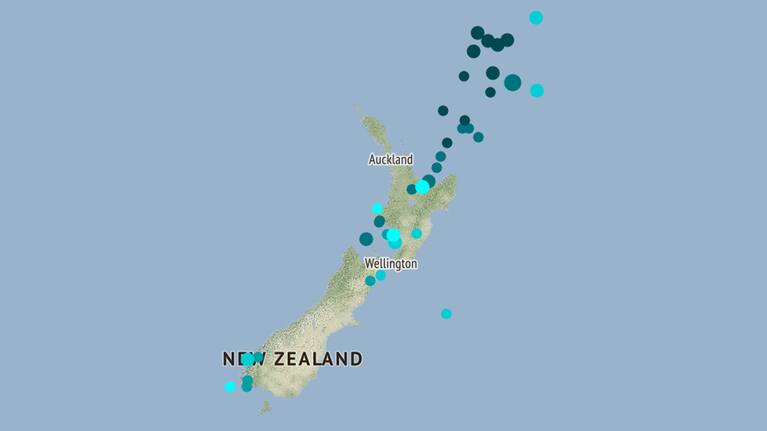A GeoNet seismologist says a series of widely felt earthquakes this week are not a sign of an increased risk of "the big one" hitting.
That said, the organisation continues to remind Kiwis that we live in a seismically-active region, and that people should be prepared.
A series of moderately-strong and shallow earthquakes were measured on Monday in the Okataina Volcanic Centre in the Bay of Plenty, with the largest of the swarm measuring 4.9.
This morning, a series of quakes was felt in the lower North Island, the largest being a 4.3 near Levin.
The largest was a magnitude 4.3 quake 30km north-west of Levin.
GNS Science seismic duty officer Jonathan Hanson said volcanic activity, including swarms, are not unusual for New Zealand.
"Earthquake sequences, or earthquakes that occur in a short period of time near one another, are fairly common in Aotearoa/New Zealand and around the world," he said.
"One example of an earthquake sequence is mainshock – aftershock, with a swarm being another type of sequence."
The quakes near Levin and those near Rotorua are "highly unlikely to be connected", Hanson said.
"Most of the shallow earthquakes this week are spaced far enough apart that there is unlikely to be physical impact on the different respective fault lines - the exception being the Okataina swarm," he said.
"We have seen minor seismic activity in the last week in Fiordland, the Whanganui basin, the Taranaki basin and the Taupō Volcanic Zone.
"All of these places are seismically active (though with different tectonic causes), and earthquakes occurring in those environments (and large and shallow enough to be felt) in one week is a quirk of probability."
Hanson said about 420 quakes had been recorded over the past week, and that was in line with "typical monthly numbers".
"Felt reports following several shallow earthquakes this week indicate that people are noticing them and this is perhaps bringing more attention than usual."
Hanson said this week's quakes are not a cause for alarm.
"Large earthquakes can be preceded by foreshocks, however swarms of activity do not necessarily indicate that a large earthquake or period of increased seismicity is on its way.
"The overall seismicity seen in NZ is highly unlikely to indicate an oncoming period of increased seismicity."
He also said that this week's unusually hot weather in some parts had nothing to do with the quakes, and that "earthquake weather" is a myth.
"Seismic activity is controlled by the release of stress accumulated through plate tectonics, and not significantly influenced by the weather on the surface of the earth," Hanson said.
"Earthquakes can occur day or night, in any weather conditions."




















SHARE ME